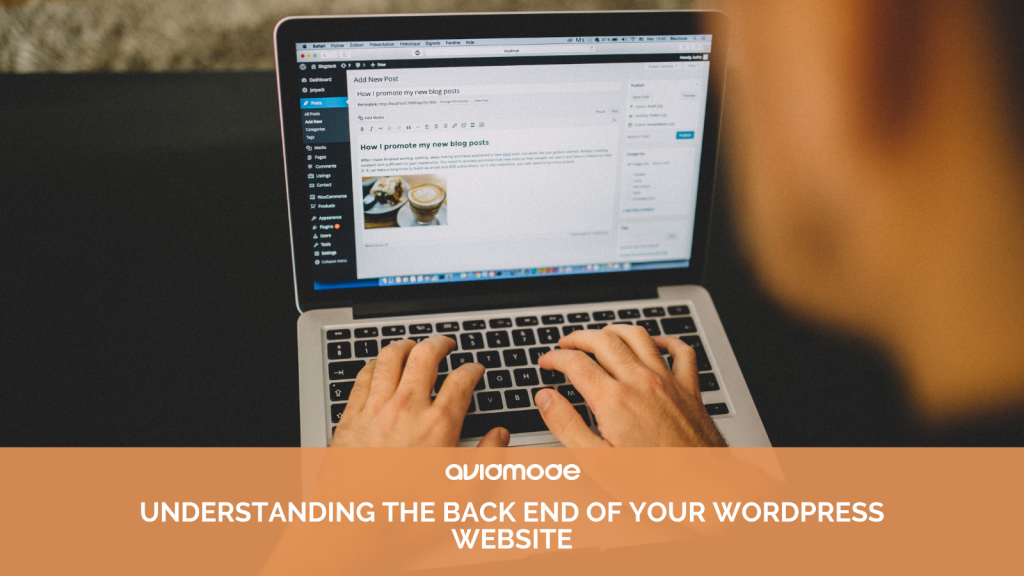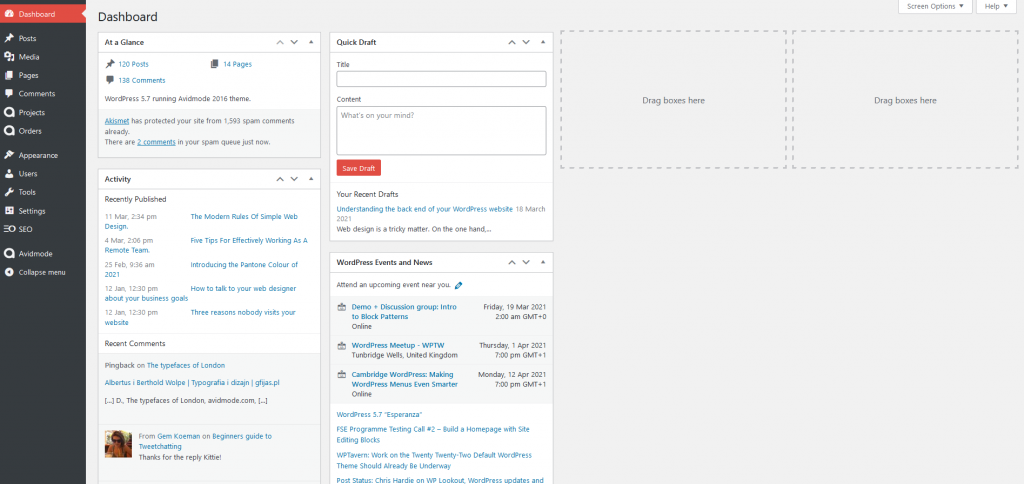Understanding the back end of your WordPress website
Web design is a tricky matter. On the one hand, you have self-build websites promising the earth in terms of freedom of functional and stylish design. Some of them may…

Web design is a tricky matter. On the one hand, you have self-build websites promising the earth in terms of freedom of functional and stylish design. Some of them may deliver on this but quite often, it is a little harder than it looks. The alternative, to get a really professional finish, is to use the services of a web design agency. But even if you do use an agency, the chances are you will still want some control over your website, will want to make amends yourself and so on.
Fortunately, this is possible with most web designers. They will do the initial build and often maintain the site on an ongoing basis, but they are happy for clients to go ahead and edit their own sites if they are able to.
Why WordPress?
Many agencies use WordPress as the structure to build your website. It’s what is called a Content Management System (CMS). It offers a huge range of functionality, and for the most part, is user-friendly even for those who aren’t techy!
There are various modules in which you can do different things, so if you want to add a new blog post, that’s straightforward. Editing web pages is also easy, and you can even add your own plugins for things such as ‘Contact Us’ forms. It may sound more complex than it is, so here’s a short guide on the key parts of your WordPress ‘back end’. The ‘back end’, by the way, is the area in which the website owner makes changes, sort of the internal workings of it all that are never seen by those browsing the site.
Firstly, the following menu options are found on the left-hand side of WordPress when you log into your system and are easily identifiable. Take a scroll through and you’ll see just how easy it is to manage your own website!

Adding or editing pages in WordPress Websites
Your website’s pages are the main body of content, where browsers will learn about what you do. This information is vital and needs to be kept up to date and relevant at all times. It will also help with SEO and getting you found on search engines. You can edit existing pages or add new ones – they will be templated, so they will mimic the same format.
Click on ‘Pages’, ‘Add New’, and you’ll be taken to a blank canvas where you can add a title, body of content, images and other media and optimise it all to be found better on searches. When you’ve finished, either save it or publish it.
If you want to edit an existing page, simply click on ‘All Pages’, and you’ll be taken to an index of them all to amend as you see fit.
Adding a new blog post to your Website
In much the same way as adding a new page works, adding a new blog post (or news article, depending on how you’ve had it set up) is a case of finding the menu item and clicking ‘Add New’. You’ll then have all the fields to fill out, which have been pre-determined in the setup. Equally, you can edit existing posts – find them by clicking on ‘All Posts’.
Installing plugins for the Website
Sound confusing? Honestly, it’s not! A plugin is just an extra bit of software that will allow your site to do something more than what the standard WordPress functionality allows. There are over 55,000 available, some of which are free (but be careful which you choose – only pick ones that have been used thousands of times), and the others require a small fee. Just select the Plugins option on the menu, and away you go!
Plugins can do all sorts of handy things, including:
- Assist with SEO – plugins such as Yoast SEO will allow you to check page content to see if it is good enough to help your site be found on Google and other search engines
- eCommerce – if you would like to sell products or services through your site, you can use a plugin such as WooCommerce to facilitate this with ease
- Information collection – if you want to do any data capture, then forms are useful and using a plugin such as WPForms can help
Changing the appearance of your WordPress Website
There are many different ‘themes’ available within the WordPress back end, so you can choose to make your website look how you desire. Think about its purpose, what audience you want to attract and ensure the colour scheme and layout fits with the product or service you’re offering. There are so many pre-set ones that there will no doubt be the perfect one for your business. To load it, simply click on ‘Appearance’ on the menu bar, then ‘Themes’, where you’ll be able to browse them all.
WordPress is a fantastic CMS for starter websites, but it can also be great for those that are more established and need to do more too, thanks to the range of features included and the vast number of plugins on offer.
If you’d like to know more about a WordPress site for your business, contact us at hello@avidmode.com, and we’ll be happy to help.
If you enjoyed reading this blog post, check out similar ones in the sidebar. Feel free to get in touch with to chat about your latest project ideas - we love a good excuse for more tea.
